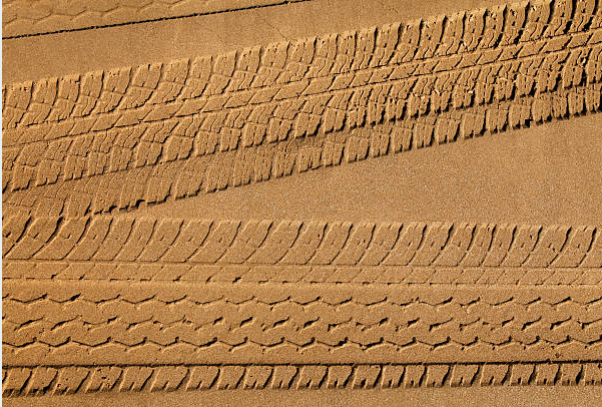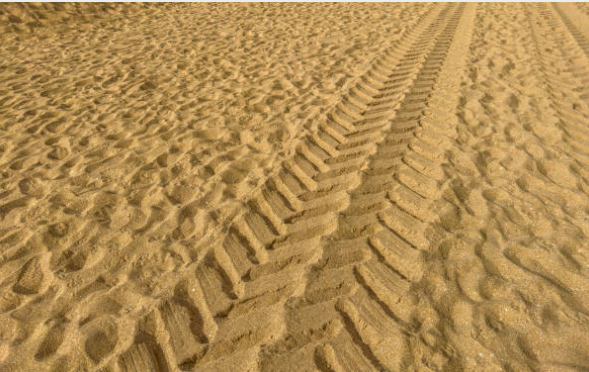Tire tread patterns are crucial for vehicle performance and safety, providing traction in various conditions. For those seeking budget-friendly options, considering free used tires near me can also be viable. This article explores tread patterns, their benefits, and how to choose the right one for specific needs. It aims to provide factual information without personal bias, covering types of patterns and considerations for selection.
Types of Tire Tread Patterns
This discussion will focus on various tire tread patterns and their effects. All-season tread Patterns are designed to balance dry and wet traction, making them suitable for year-round use.

Winter Tread Patterns, Are designed to enhance traction on icy and snowy roads.
Additionally, Mud and Snow Tread Patterns are designed to provide excellent traction in muddy or snowy conditions, while All-Terrain Tread Patterns are designed to handle a variety of off-road conditions.
All-Season Tread Patterns
An all-season tread pattern consists of continuous ribs or blocks with multiple sipes and grooves that provide increased traction on both dry and wet roads. These tread patterns are designed to perform well in a variety of weather conditions, making them suitable for year-round use.
The continuous ribs or blocks on the tread provide stability and uniform contact with the road surface, which helps improve handling and steering response. The multiple sipes and grooves help to evacuate water from the contact patch, reducing the risk of hydroplaning on wet roads. This ensures that the tires maintain good grip and traction, even in rainy conditions.
Winter Tread Patterns
Winter tread patterns are designed to provide optimal traction and control on snow-covered and icy roads, ensuring safety and peace of mind for drivers facing harsh winter conditions.
These patterns are characterized by deep grooves and aggressive siping, which are small slits in the tread blocks that help to grip the road surface.
The deep grooves in winter tread patterns are designed to channel water, slush, and snow away from the tire’s contact patch, allowing for better traction and reducing the risk of hydroplaning.
The aggressive siping helps to enhance grip by biting into the snow and ice, providing more surface area for the tire to make contact with the road.
Another important feature of winter tread patterns is the presence of 3D or multi-directional sipes.
These sipes are strategically placed to provide additional biting edges and improve traction in all directions. This is especially crucial when driving on icy surfaces, where the ability to grip and maneuver is essential.
The sipes also help to maintain the flexibility of the tire’s tread blocks, allowing them to conform to the road surface and provide better contact and control.
Mud And Snow Tread Patterns
Mud and snow tread patterns are designed to provide enhanced traction and control on muddy and snowy terrains, ensuring optimal performance and safety for drivers in challenging off-road conditions.
These tread patterns feature deep and widely spaced grooves that help to evacuate mud, slush, and snow from the tire’s contact patch, preventing the buildup of these elements and maintaining constant contact with the road surface.
The large voids between the treads allow for effective self-cleaning, ensuring that the tire maintains its grip and traction even in the most demanding conditions.
All-Terrain Tread Patterns
The intricate web of grooves and blocks on all-terrain tires intertwines like a labyrinth, creating a network of pathways that seamlessly adapt to the ever-changing terrain, allowing for exceptional traction and control in off-road conditions.
These tread patterns are designed to provide optimum performance on both paved roads and rough terrains.
The deep grooves and wide voids in the tread pattern help to expel mud, snow, and other debris, preventing the tires from getting clogged and ensuring continuous contact with the ground. This enhances the tire’s ability to grip uneven surfaces, such as rocks, gravel, and sand, providing stability and reducing the risk of skidding or sliding.
Benefits Of Tire Tread Patterns
This paragraph will discuss the benefits of tire tread patterns. Their ability to improve traction, increase mileage, and improve handling.

Tire tread patterns play a crucial role in improving traction by channeling water and debris away from the tire, allowing for better grip on the road.
The right tread pattern can also increase the mileage of a tire by reducing rolling resistance and improving fuel efficiency.
Lastly, tire tread patterns can enhance handling by providing better stability and responsiveness, allowing for safer and more controlled driving.
Additional Articles: Tire Maintenance for High-Mileage Vehicles
Improve Traction
To enhance traction, selecting the appropriate tire tread pattern is crucial. The tread pattern of a tire plays a significant role in determining its ability to grip the road surface, especially in challenging weather conditions. Different types of tread patterns are designed to perform optimally in specific situations, such as wet roads, snow-covered surfaces, or off-road terrains.
One common type of tread pattern is the symmetrical or multi-rib pattern, which is characterized by continuous ribs running across the width of the tire. This pattern provides excellent traction on dry roads and is commonly found in passenger cars and trucks.
Another type is the directional pattern, which features V-shaped grooves that are designed to expel water and improve grip on wet surfaces. This pattern is used in high-performance tires and is particularly effective in reducing the risk of hydroplaning.
Increase Mileage
One effective strategy for maximizing the distance traveled on a set of tires involves optimizing the tire’s rolling resistance. Rolling resistance refers to the force that opposes the motion of a tire as it rolls on a surface. By reducing this resistance, tires can achieve higher fuel efficiency and increase mileage.
One way to achieve this is by selecting tires with low rolling resistance tread patterns. These tread patterns are designed to minimize the energy loss caused by the tire’s deformation and friction with the road surface. By reducing the energy wasted in these processes, the tires can roll more easily and require less power from the engine, resulting in improved fuel economy and increased mileage.
Improve Handling
To further enhance vehicle performance, tire tread patterns play a crucial role in improving handling. The tread pattern refers to the design and arrangement of the grooves, sipes, and blocks on the tire surface, which directly affects how the tire interacts with the road. By carefully designing the tread pattern, tire manufacturers aim to optimize traction, stability, and overall handling characteristics.
An effective tread pattern can significantly enhance a vehicle’s handling capabilities. The grooves and channels in the tread pattern help to disperse water, snow, and mud, preventing hydroplaning and maintaining contact with the road surface. This enables the tire to grip the road more effectively, enhancing stability and control during turns, accelerations, and decelerations.The blocks and sipes in the tread pattern provide biting edges that improve traction on various road conditions. By increasing the tire’s ability to grip the road, the handling of the vehicle is improved, allowing for better maneuverability and responsiveness.
Tire tread patterns are not only crucial for increasing mileage but also have a significant impact on improving the handling of a vehicle. Through the careful design of grooves, sipes, and blocks, tire manufacturers can optimize traction, stability, and control. By dispersing water, snow, and mud, the tread pattern ensures that the tire maintains contact with the road surface, reducing the risk of hydroplaning.
Moreover, the blocks and sipes provide biting edges that enhance traction on various road conditions. With an improved ability to grip the road, the handling of the vehicle is enhanced, resulting in better maneuverability and responsiveness.
Related Content: The Impact of Speed and Load Rating on Tires
Considerations When Choosing Tire Tread Patterns
When choosing tire tread patterns, it is important to consider the vehicle type, driving conditions, and tire wear.

The vehicle type plays a crucial role in determining the appropriate tread pattern as different types of vehicles have different traction requirements.
Driving conditions such as wet, snowy, or off-road conditions should be taken into account to ensure optimal performance and safety.
Lastly, the consideration of tire wear is essential as certain tread patterns wear more quickly or unevenly, affecting the overall longevity and effectiveness of the tires.
Vehicle Type
Different vehicle types require specific tire tread patterns to ensure optimal performance and safety on various road surfaces. The type of vehicle plays a crucial role in determining the appropriate tread pattern.
Passenger cars require tread patterns that provide good traction on both wet and dry roads. This ensures stability and maneuverability while driving at high speeds. The tread pattern for passenger cars features circumferential grooves that help to channel water away from the tire’s surface, reducing the risk of hydroplaning. The tread pattern include sipes, which are small slits in the tread blocks that enhance grip on icy or snowy roads.
Driving Conditions
Driving conditions significantly influence the performance and safety of vehicles, making it crucial to consider specific tire tread patterns tailored to various road surfaces.
Different driving conditions require different levels of traction, handling, and stability. For example, driving on wet or slippery surfaces requires a tire tread pattern that can effectively channel water away from the contact patch, reducing the risk of hydroplaning. This is achieved through the use of deep grooves and wide channels in the tread design, allowing water to be dispersed and maintaining contact between the tire and the road.
Tire Wear
Tire wear refers to the gradual erosion of the tread pattern on a tire’s surface due to regular usage and friction with the road. It is a natural process that occurs over time and can have significant effects on the handling, traction, and braking capabilities of a vehicle.
Tire wear can occur in various ways, depending on the driving habits, road conditions, and tire maintenance practices. One of the most common types of tire wear is known as uneven wear, where the tread is worn down unevenly across the tire’s surface. This can be caused by factors such as improper tire inflation, misalignment of the wheels, or suspension issues.
Uneven wear can lead to a decrease in traction and stability, making the vehicle more prone to skidding, hydroplaning, and loss of control. It can also result in increased fuel consumption and a shorter lifespan of the tires. Therefore, it is crucial to regularly inspect and maintain the tire tread to ensure optimal performance and safety on the road.
Conclusion
Tire tread patterns are vital for vehicle performance and safety. They offer unique benefits, like improved traction and grip. When choosing a pattern, consider factors such as climate, terrain, and driving habits. Selecting the right pattern enhances performance, safety, and tire longevity, ensuring a better driving experience and road safety.
